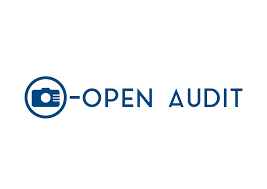OpenAudit — Automated IT Asset Discovery and Inventory
OpenAudit is an open-source tool built for one of the less glamorous but absolutely necessary jobs in IT: keeping track of what’s actually on the network. Servers, desktops, switches, even odd devices tucked into corners — it scans, records, and lists them. Instead of walking through spreadsheets or chasing users for details, admins end up with a central view of hardware and software that’s already in place.
Why It Matters
Ask ten admins how many machines and applications are running in their estate and half will laugh. Environments change constantly: new laptops appear, firmware gets updated, someone installs software without notice. Without a live inventory, patching and compliance quickly turn into a guessing game. OpenAudit fills that gap by running regular scans and flagging changes. It’s not as shiny as monitoring dashboards, but it saves hours during audits and cuts down surprises when something breaks.
How It Works
– Installs on Linux or Windows with a database backend.
– Scans devices using SNMP, WMI, or SSH; no agents required in most cases.
– Results go into a database, then show up in a web console with search and reports.
– The system can highlight “what’s new” since the last run — new devices, software installs, or config changes.
– Permissions can be set so managers see reports without touching raw configs.
Deployment / Installation Guide
– Standard stack: Apache/Nginx, PHP, MySQL or MariaDB.
– Packages available for Linux; Windows has an installer with bundled components.
– Devices can be added manually, scheduled for recurring scans, or pulled in by subnet discovery.
– Reports export to CSV or PDF for audits. Email scheduling is supported.
Integrations
– Hooks into Active Directory for authentication.
– SNMP covers network gear; Windows endpoints via WMI.
– Data can be pushed toward BI dashboards or compliance systems.
– External scripts extend export and automation.
Real-World Applications
– Preparing for audits with an up-to-date hardware/software list.
– Spotting unauthorized apps installed on desktops.
– Tracking device changes across branch offices.
– Giving non-technical managers clean asset reports without manual work.
Limitations
– Interface feels functional, not modern.
– Very large environments may run into scaling limits unless tuned or upgraded to enterprise editions.
– Results depend on valid credentials; devices without them remain partially visible.
– Smaller community compared to popular monitoring tools.
Snapshot Comparison
| Tool | Role | Strengths | Best Fit |
| OpenAudit | IT asset inventory | Automated discovery, agentless | SMBs, compliance-driven teams |
| OCS Inventory | Asset management | Long history, GLPI integration | Orgs needing asset + helpdesk tie-in |
| Lansweeper | Commercial ITAM | Polished UI, strong reporting | Enterprises with budget for ITAM |
| Nmap | Network scanner | Flexible, scriptable, lightweight | Quick ad-hoc discovery by admins |

